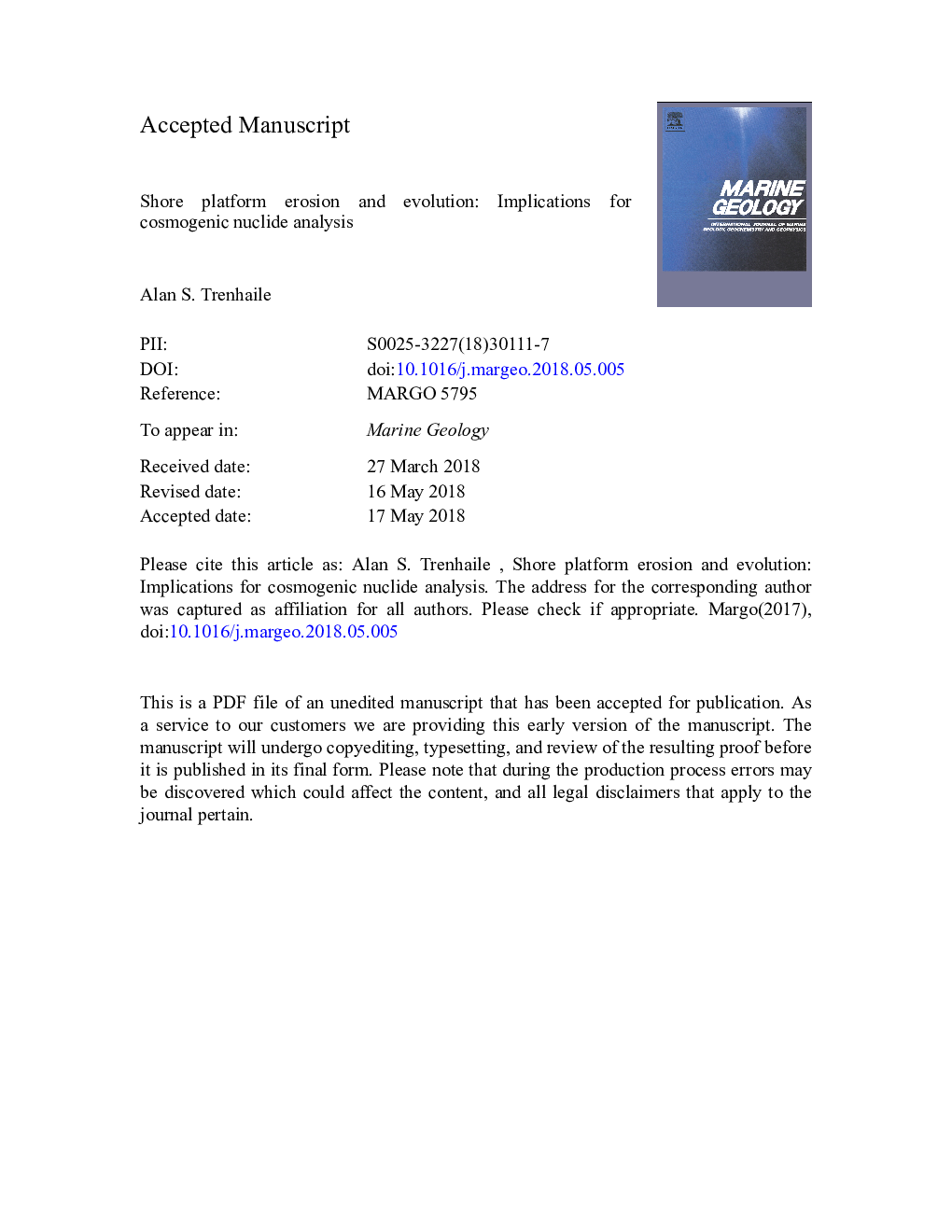| Article ID | Journal | Published Year | Pages | File Type |
|---|---|---|---|---|
| 8911921 | Marine Geology | 2018 | 61 Pages |
Abstract
Determining rates and modes of shore platform development and the age of associated elements are among the greatest challenges facing rock coast researchers today. These coasts generally lack dateable deposits but cosmogenic nuclide analysis (CNA) can be applied directly to bare rock surfaces to estimate erosion rates or the time that a surface has been exposed over millennial timescales. Therefore this technique has the potential to revolutionize current theories on rock coast evolution and modes of development. Because environmental and geomorphological factors affect rates of nuclide accumulation and retention, however, the results of CNA analysis are dependent on the validity of the theoretical models that have to be employed according to the particular application. Among the important assumptions that may be made are those concerned with shading, tidal immersion, beach sediment covers, and other factors that influence rates of nuclide accumulation, and with possible spatial and temporal patterns in shore platform erosion, primarily by wave-generated backwearing and weathering-induced downwearing, that reduce nuclide concentrations. Our lack of understanding of the factors that control these variables, and in particular shore platform erosion, which is the subject of this review, has important implications for modelling rock coast evolution, assessing the possible contribution of inheritance, and dating, especially by CNA, the occurrence of important, formative events.
Related Topics
Physical Sciences and Engineering
Earth and Planetary Sciences
Geochemistry and Petrology
Authors
Alan S. Trenhaile,
